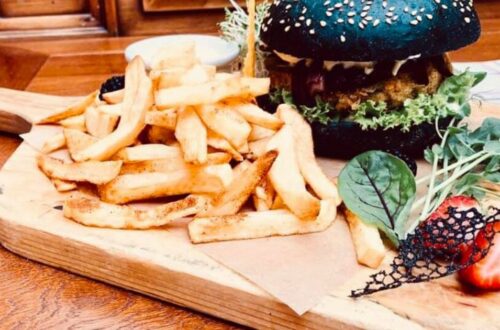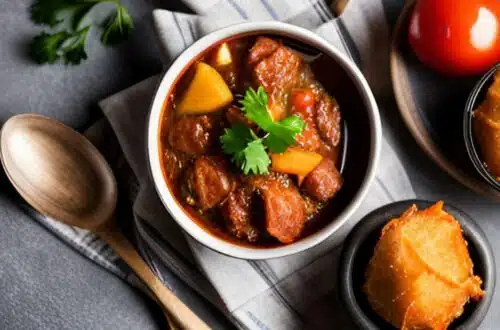9 Must-Try Traditional Polish Drinks
Poles are known for their excellent cuisine and hearty dishes that evolved over centuries. But to satisfy your taste buds to the fullest, you should ideally pair your foods with some beverages. Poland has a variety of delicious drinks to enjoy, from soft ones to alcoholic beverages. Whether you’re addicted to tea or something pretty potent, here is a list of the best traditional Polish drinks that you should try while visiting Poland.
Bimber – Polish Moonshine
Let’s start strong. Bimber is a traditional home-made Polish moonshine that emerged in popularity in the nineteenth century. While your party vodka has an average of 80-90 proof, bimber comes with proofs as high as 180. This potent alcohol is moving around the tables, usually on significant events such as weddings or baptisms. You can drink all you want, and there’s no hangover.
Piwo – Beer
It won’t be a stretch to say that Poles are beer lovers. In 2018 Poles broke a record for beer consumption, 100.5 liters per person. On the contrary, in the 1990s, the average Pole consumed about 30 liters. Which Polish beers should you try out?
A list of brands offering lovely beers is so rich that you can literally get dizzy. Here are 5 Polish beers considered one of the tastiest: Tyskie, Zywiec, Warka Strong, Perla Miodowa and Lech. Once you hunt down your favorite polish beer, sit down comfortably in your armchair, relax and sip it slowly while nibbling on your snacks.
Nalewki – Liqueurs
What is nalewka? It’s alcoholic extracts of fruits, roots, flowers, or herbs (or mixtures of ingredients), typically 40-45 percent alcohol content. They have been considered a tasty drink based on spirit and known for their pro-health properties for generations.
They are an inseparable element of our tradition and culture, and their recipes are passed on like other grandma’s recipes. If you’re suffering from any health condition, these blessings of Mother Nature can support your immunity, boost your energy levels and make you feel better. But before you give it a go, it would be wise to contact your physician.
How do I know which one to pick?
Considering the wide selection and properties of these traditional Polish drinks, it is worth trying several types of them. For example, a chokeberry tincture with honey, full of vitamins and microelements, is recommended.
For those who prefer to enjoy a sweet, fruity taste, the one made from strawberries may be the right choice. If you’re after an intense aroma of cherry fruit which btw goes perfectly with tea giving it a unique character, pick cherry in a honey liqueur. Taken in reasonable amounts, they can strengthen and refreshment and also allow you to enjoy the delicious taste.
Miod Pitny – Mead
Mead is an alcoholic beverage whose history dates back to the Middle Ages. Due to the method of diluting mead, it is possible to distinguish półtorak, dwójniak, trójniak, and czwórniak. The most potent is Poltorak, characterized by a long maturation process somewhere 5-10 years. It has the best aroma plus contains 15-18% of alcohol. The weakest is czworniak, with a relatively short maturation process (a couple of months to one 1year) with less than 11 % alcohol by volume.
So remember, the longer aging time or more honey in the mead, then the better drink you will have. There are many variations of meads besides those based on honey only.
To diversify the taste of the drink even more, mead producers began to season honey with spices and herbs. If you would like to taste something different with a rich flavor, then you should try out linden mead. Those who do not like the spicy and herbal flavor can enjoy mead with the addition of fruit juices. Beer lovers don’t have to be jealous since producers created a hopped mead with a characteristic bitterness and exciting aroma.
Honey in these forms is widely used and has healing properties, and its taste has won many supporters. I encourage you to try out this hidden treasure of Poland.
Grzaniec – Mulled Wine
Mulled wine is a drink with a long and rich tradition. More than half a thousand years ago, mulled wine was considered a great product that warms up and is … an excellent means of prevention against demons and evil spirits. The famous mulled wine can be enjoyed in many places around the world. However, it has gained the greatest popularity in Scandinavia, German-speaking European countries, and Poland.
When very dark and freezing winter evenings are approaching, biting your cheeks and spraying frost in your eyes, there is nothing better than mulled wine. During the winter season, numerous mountain resorts, ski slopes, restaurants, and bars offer delicious mulled wine that is loved by tourists and locals alike.
For those who would like to make themself a mulled wine, the recipe is very straightforward. You just need a bottle of red or white wine (sweet, semi-sweet, dry – basically no difference), orange, cloves, cinnamon, sugar, and even better honey. Boil it till warm, pour into a mug, and take a sip of this lovely alcoholic drink.
You can buy ready-made mulled wine in many polish shops, they are often very tasty, but it is worth looking for old, slightly dusty recipes.
Wodka – Vodka
For centuries, Poland and Russia have been competing over which of these countries is the home of vodka. Today, the scales of victory seem to be tilted in favor of our country. While we associate whiskey with a Scottish gentleman in a checkered flat cap, cognac with an elegant French mustache, vodka is best suited to a noble kontusz.
Apart from dumplings, Frederic Chopin and Malbork castle is our national treasure with over 600 years of tradition. A perfect glass of vodka should be ideally chilled, clear as a mountain stream, and drunk with passion.
Polish Vodka can be made from rye, barley, oats, wheat, triticale, or potatoes. Moreover, all raw materials must come from the territory of Poland. If you’re planning on sipping vodka, look for these brands: Pan Tadeusz, Belvedere, Zoladkowa Gorzka, or Zubrowka.
Kompot – Compote
This sweet drink Poles often link with blissful childhood, holidays at grandma’s, or Christmas Eve where the compote reigns on the table and has its place among Christmas Eve dishes.
Compote is a drink made from fresh or dried fruit with added sugar and spices. You don’t need excellent culinary skills to make this alcohol-free, fruity soft drink. You can drink them right away, but it’s best to close them in jars and fill your home pantry. Besides, they are a perfect addition to your dinner.
Oranzada – Orangeade

Orangeade is a cooling carbonated soft drink with an intensely sweet, usually orange flavor. They contain flavors known to us from childhood when each sip brings back the best memories of summer days and evenings we spent in the backyard. Orangeade had seen better days at the times of the Polish People’s Republic when the distribution center was bringing them in wicker baskets to the nearest stores. Sadly, at the beginning of the 1990s in
They have original names, original labels and are often the pride of small family businesses, which at the same time maintain the tradition. You can find them at various types of food fairs, regional festivals, and small, atmospheric gastronomic establishments that contrast them with popular foreign drinks. If you have the opportunity – be sure to try them!
Kwas – Kvass
Kvass is a fermented brown-color bread drink that has numerous health benefits. Kvass strengthens immunity, regulates digestion, and even promotes weight loss. However, it is most famous for the fact that it quickly quenches thirst and refreshes, which is why it works well in hot weather.
In Poland, it became widely known during the times of Władysław Jagiełło. Its a drink with quite a long tradition, but you can safely make it yourself at home. It tastes great as a drink or addition to many meat dishes because it reflects their intense flavor and aroma well. Today is experiencing an upsurge in popularity due to the hype for a healthy lifestyle.











